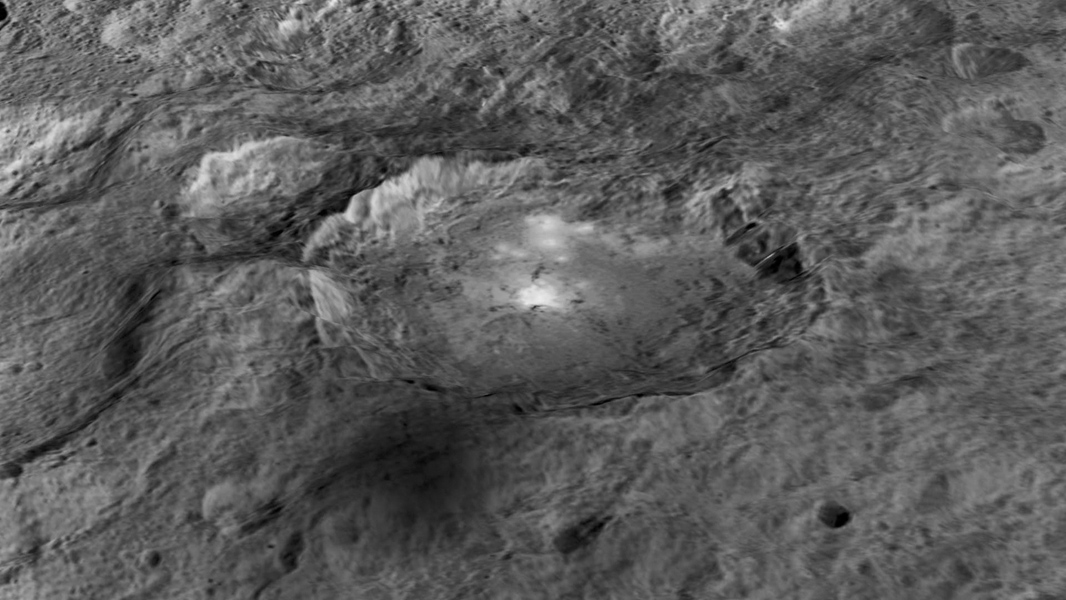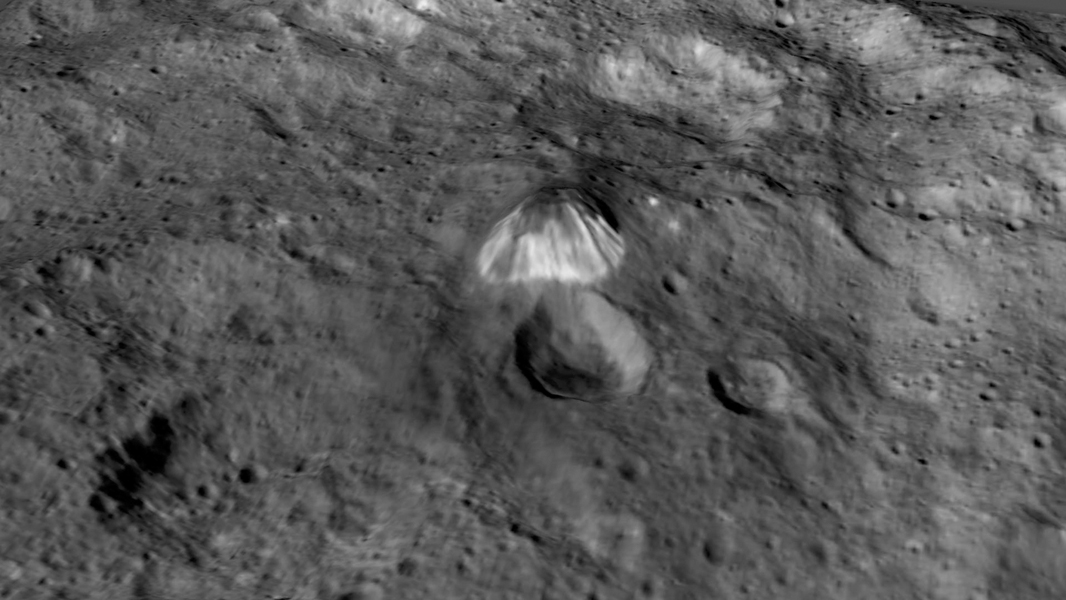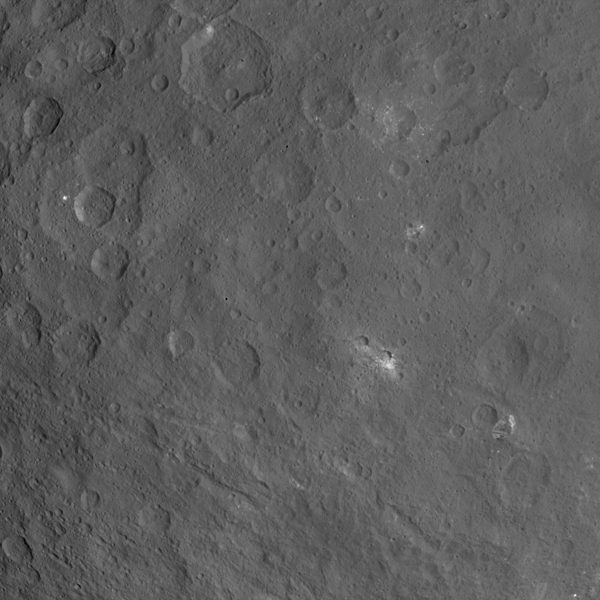Fly Over Ceres' Mysterious Mountain and Bright Spots in Incredible Video

With or without 3D glasses, a newly released video tour of Ceres offers a new perspective on the dwarf planet's dramatic and diverse surface.
The new Ceres video tour, which was compiled from images gathered by NASA's orbiting Dawn spacecraft, scopes out the mysterious bright spots at the bottom of the dwarf planet's 2-mile-deep (3.2 kilometers) Occator crater and a 4-mile-high (6.4 km) mountain scientists are calling "The Pyramid."
"This mountain is among the tallest features we've seen on Ceres to date," Dawn science team member Paul Schenk, a geologist at the Lunar and Planetary Institute in Houston, said in a statement. "It's unusual that it's not associated with a crater. Why is it sitting in the middle of nowhere? We don't know yet, but we may find out with closer observations." [Photos: Dwarf Planet Ceres, the Solar System's Largest Asteroid]

The Pyramid also has unusual bright streaks running down one side, which are not yet understood. Its 4-mile height is a revision from researchers' previous estimate of 3 miles (4.8 km).
Ceres' more familiar — but perhaps even more mysterious — bright spots reside inside Occator, a 60-mile-wide (97 km) crater. Occator only recently received an official name, but scientists have been speculating on the bright spots' nature and origin since they were first glimpsed in January as Dawn approached the dwarf planet.
Dawn's measurements of the spots — which appear to be subliming gas to create a mini-atmosphere within the crater — are so far not consistent with the properties of water ice, researchers said.
"The science team is continuing to evaluate the data and discuss theories about these bright spots at Occator," Dawn principal investigator Chris Russell, of UCLA, said in the statement. "We are now comparing the spots with the reflective properties of salt, but we are still puzzled by their source. We look forward to new, higher-resolution data from the mission's next orbital phase."
Get the Space.com Newsletter
Breaking space news, the latest updates on rocket launches, skywatching events and more!
The new animation has vertical relief exaggerated by a factor of five to make it easier to examine the strange topographies and notice subtle changes, NASA officials said. By examining such an animation, scientists can get a better idea of how particular features of interest fit into the overall structure of the dwarf planet.

The $466 million Dawn mission launched in September 2007 to study Ceres and Vesta, the two largest objects in the asteroid belt. The probe orbited Vesta from July 2011 through September 2012, and it arrived in orbit around the 584-mile-wide (940 km) Ceres this past March.
Dawn is currently spiraling down to its third science orbit around Ceres, which lies about 900 miles (1,500 km) above the dwarf planet's surface. The probe should reach that orbit by mid-August, when it will resume its observations of Ceres, NASA officials said. (Dawn's previous science orbit featured an altitude of 2,700 miles, or 4,400 km.)
"There are many other features that we are interested in studying further," Dawn science team member David O'Brien, senior scientist at the Planetary Science Institute in Arizona, said in the statement. "These include a pair of large impact basins called Urvara and Yalode in the southern hemisphere, which have numerous cracks extending away from them, and the large impact basin Kerwan, whose center is just south of the equator."
Email Sarah Lewin at slewin@space.com or follow her @SarahExplains. Follow us @Spacedotcom, Facebook and Google+. Original article on Space.com.
Join our Space Forums to keep talking space on the latest missions, night sky and more! And if you have a news tip, correction or comment, let us know at: community@space.com.

Sarah Lewin started writing for Space.com in June of 2015 as a Staff Writer and became Associate Editor in 2019 . Her work has been featured by Scientific American, IEEE Spectrum, Quanta Magazine, Wired, The Scientist, Science Friday and WGBH's Inside NOVA. Sarah has an MA from NYU's Science, Health and Environmental Reporting Program and an AB in mathematics from Brown University. When not writing, reading or thinking about space, Sarah enjoys musical theatre and mathematical papercraft. She is currently Assistant News Editor at Scientific American. You can follow her on Twitter @SarahExplains.









